Chemist Rebecca Smaha Knows It: Next-Gen Clean Energy Technologies Hinge on Basic Materials Science
Call it fate or happenstance, but Rebecca Smaha found her chemistry specialization in an auditorium at Princeton University during her junior year.
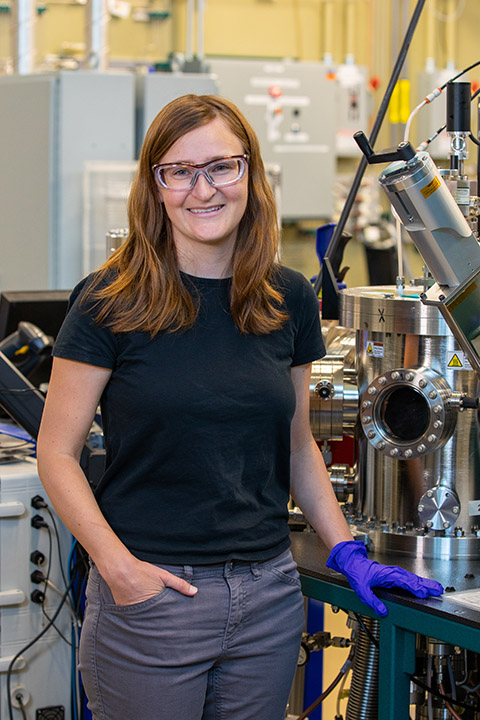
Rebecca Smaha joined NREL as a Director’s Postdoctoral Fellow in 2021. Photo by Werner Slocum, NREL
“Solid-state chemistry is hot!” read the title slide of Professor Robert Cava’s PowerPoint. It was given at a colloquium designed to help chemistry majors choose the lab group in which they would conduct their junior and senior thesis research.
Professor Cava described the powerful capabilities in his lab: heating elements up to 2000°C or applying 5-plus gigapascals of pressure to unveil insights into structural, chemical, and electrical properties.
The pitch was persuasive. Smaha joined his group and spent the next year and a half preparing and characterizing new compounds, including for potential use as solid-state electrolytes in batteries. She was the first author on a resulting paper in Inorganic Chemistry, which described their efforts to tune sodium ion conductivity using compounds with layered, honeycomb-like structures.
“He was really the best undergrad advisor I could have ever asked for,” Smaha reflected on the experience. “I got lucky to have such a nice introduction to research and great mentorship.”
Smaha has stuck with solid-state chemistry ever since—albeit with small forays into linguistics and solid-state physics. From Princeton to a Fulbright at Complutense University of Madrid, a Ph.D. at Stanford University to the National Renewable Energy Laboratory (NREL), Smaha’s career has been defined by her love of learning and the allure of the material world. Already, her drive and chemistry expertise are leading to brand-new materials—invented at NREL—that could improve the efficiency of clean energy technologies.
The interview with Smaha below is edited for length and clarity.
I was surprised to learn that you studied linguistics as a minor at Princeton.
I’ve always loved languages. I studied a couple of languages in high school. I did a summer program in Spain and a summer program learning French. I decided to take some linguistics classes and really liked it. Actually, at Princeton you're not allowed to double major because you have to write a senior thesis for your major. So that was the best I could do—a minor certificate in linguistics—and it was a nice break from the hard sciences.
The funny thing is, even to minor I had to do a little bit of independent research in linguistics. That’s why I have a paper looking at Klingon.
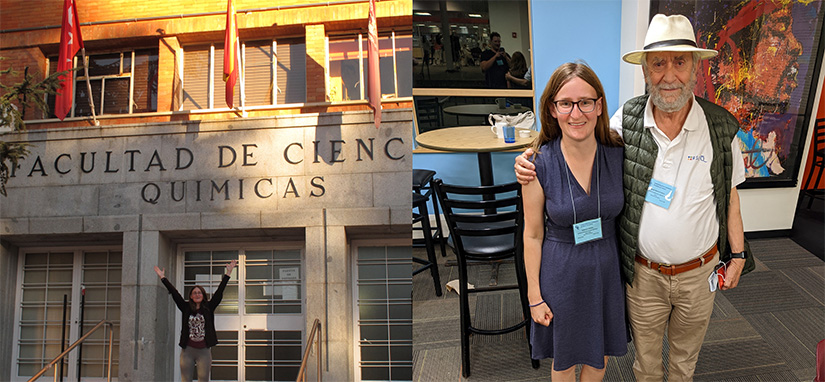
Smaha’s dual love of languages and chemistry brought her to the chemistry department at the Complutense University of Madrid, where she worked in the lab of solid-state chemist Prof. Miguel Alario Franco during her 2014–2015 Fulbright Research Grant. Photos from Rebecca Smaha, NREL
Wait, Klingon from Star Trek?
Well, it's been a long time since I've thought about this, but I did some computational analysis of artificial languages including Klingon and Lojban, which is supposed to be the most logical language. I picked a few languages that had a big enough corpus of literature that I could get online. I downloaded a lot of that and was able to do some computational entropy analysis.
Okay, that was not where I imagined you going with that. But you ultimately chose chemistry, right?
I liked a lot of the sciences in high school but definitely loved chemistry. In college, I took organic chemistry freshman year and never quite got into it, but I loved the physical and inorganic chemistry classes after that. Freshman year, physics was really hard. One of my greatest stories is that my preceptor (section leader) for freshman physics was Duncan Haldane, who won the Nobel Prize a few years later. And it was a tough class.
No doubt!
But I loved chemistry. I did a summer high school program in Texas, where I grew up—the Welch Summer Scholars Program in chemistry sponsored by the University of Texas at Austin. I spent five weeks doing research at Texas Tech University the summer before senior year of high school, and I found that really fun.
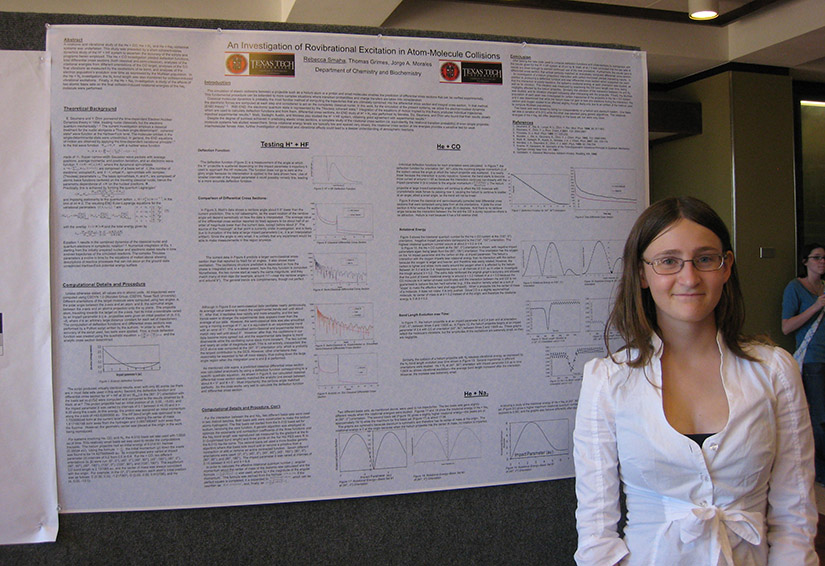
Smaha’s first of many chemistry poster presentations to come was in 2009 at Texas Tech’s Welch Summer Scholars Program. Photo from Rebecca Smaha, NREL
So you didn't go for physics, and you didn't go for math—you went for chemistry. What was it that fascinated you so much?
I really enjoyed the research. It just explains things in a much more fundamental way. Biology really depends on chemistry, and I think the physicists argue that physics and math underlie everything. But in order to have this world that we live in, it's all chemistry. For me, I find it really interesting to think about how it all works and how that comes together, and what the properties are of different elements and how they come together to give us macroscopic properties.
Even as a chemistry doctoral student, you worked in a solid-state physics lab. Is there a lot of overlap between those two fields?
There's a lot of overlap. We would be working on the same materials, but the solid-state chemist would be trying to make them, trying to understand the composition and structure, and getting an initial sense of the properties. The solid-state physicist would be delving deeper into the properties and the physics, and so it's sort of two sides of the same coin. And I think that they are both essential, right? So I learned a lot about condensed matter physics from my advisor, Prof. Young Lee, and while I was in the group we learned, I think, a whole lot about the chemistry of the materials we were working on.
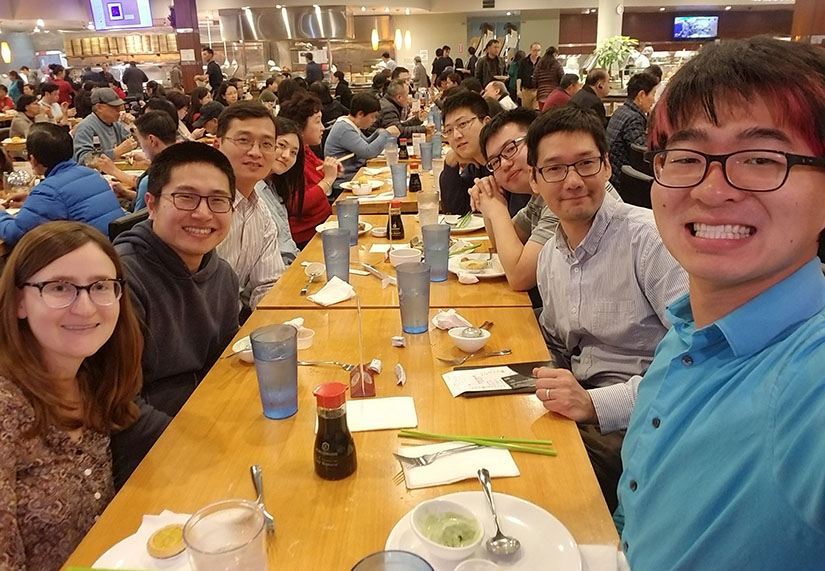
Sounds like fruitful cross-disciplinary collaboration. Do you find that there's a lot of that in the work you do at NREL as well?
That is definitely one of the things that I really like about it. My job title is “researcher – materials science,” but it could easily be chemistry or potentially physics. Our research group is a mix of chemists, physicists, and materials scientists—and we also have a couple of electrical engineers and mechanical engineers. It's very interdisciplinary, and I think that's a really powerful thing.
You do a lot of very fundamental materials science. How would you explain the importance of that work for the larger picture of renewable energy—things like solar panels, wind turbines, and electric vehicles?
I'm really focused on trying to design and make materials at an early, early stage that will hopefully be used in new energy technologies down the line. Our current materials, like solar panels, had to start somewhere. My role here is to look at early-stage materials, and that involves figuring out how to make them, what their structure is, and what they could be good for in the future. It's a really vital part of the experimentation and development pipeline.
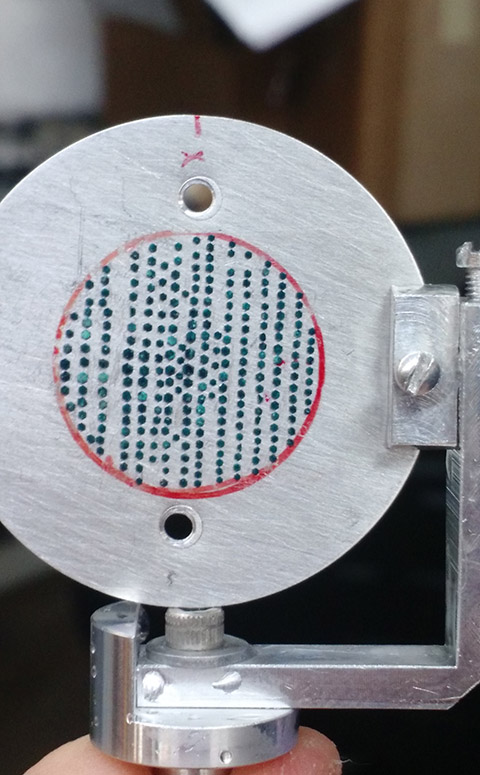
Smaha hopes to invigorate NREL’s basic energy research with her expertise on bulk material synthesis and crystal growth—such as the barlowite (Cu4(OH)6FBr) crystals pictured here she grew at Stanford for neutron scattering experiments. Photo by Rebecca Smaha, NREL
What was it like transitioning out of academia to NREL?
When I came to NREL, I changed my research topic pretty significantly. I worked with Dr. Andriy Zakutayev as my Director’s Fellowship mentor and learned how to grow thin films—10 to a couple hundred nanometers thick—because NREL and our group has so much history and expertise in thin films. In grad school and before that I was making bulk powder samples. I would be making grams of something as a powder, or I was growing macroscopic crystals that we could measure. These thin films can be used as a coating, or there are solar panel technologies that have coatings and that's the active layer. For me, coming here was a really big shift in my focus.
What kind of materials are you most excited about right now?
Nitrides are my big focus. My group right now focuses a lot on ternary nitrides because that family of materials is predicted to have some really interesting properties that cut across a wide range of applications. It's also an area that is very underexplored compared to other materials families because they're really hard to make. A lot of things in our life have oxygen in them, like in sunscreen: titanium oxide. There's oxygen everywhere, and it's really hard to make a nitride that doesn't have oxygen in it.
The materials I'm most excited about right now are magnetic nitrides. Most of the really good magnets today use rare earth elements, which are considered critical materials, so for both cost and geopolitical reasons we’re trying to find alternatives. And there's just some really cool chemistry and physics that we can do with nitrides.
And what kind of applications might you use nitrides for?
They can be used in electric vehicle motors; each electric vehicle motor needs like 5 kilograms of magnet material. Wind turbine motors need roughly 500 kilograms of magnetic materials.
If we can make them lighter, that can increase efficiency. If we can make them without these critical elements, that makes them a lot cheaper, and it makes us less reliant on other countries.
What’s next?
I'm trying to build up NREL’s capability in bulk synthesis and crystal growth—so going back more to my previous background and building up facilities and expertise. It's an area that NREL historically hasn’t done much in, so I’m excited about that direction.
Last Updated May 28, 2025
